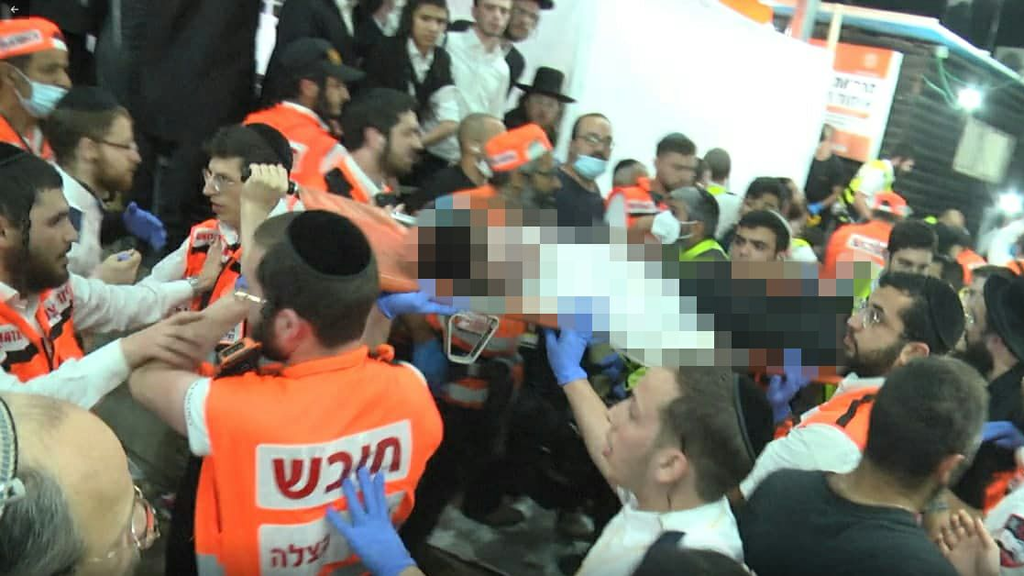Getting your Trinity Audio player ready...
Interior Minister Aryeh Deri “fought like a lion” to allow the Mount Meron event, where the country's biggest civilian disaster occurred on Friday, to take place, according to the head of the national holy places center.
A stampede that broke out at the Lag BaOmer festivities on the mountain last week claimed the lives of 45 worshippers, including 10 children, prompting the government to declare Sunday as national day of mourning.
3 View gallery


Interior Minister Aryeh Deri and the festival on Mount Meron
(Photo: AFP, Amit Shaabi)
Yosef Schwinger from the National Center for the Development of Holy Places said in an interview just hours before the stampede the leader of the ultra-Orthodox Shas party passionately argued during a cabinet meeting to allow the festival to go ahead unimpeded.
Schwinger said Deri deserved credit for “saving” the Lag BaOmer celebration from a more limited format.
The National Center for the Development of Holy Places, founded in 1981 to promote education activities and elevate the status of Israel's holy sites, is one of several bodies responsible for organizing the Lag BaOmer festival at Mount Meron.
Schwinger told Kikar HaShabbat, Israeli news website directed toward Haredi audience, that Hassidic groups organizing the trips to the event promised they would only allow in Green Pass holders and hold bonfire lighting ceremonies in groups of up to 10,000 people. "The Israel Police defines it as the most complex event in Israel," he said.
He added, however, worshippers shouldn't bring children to the event and must refrain from coming at the last minute in order to avoid overcrowding at entrances.
Schwinger also said that as one of the organizing groups, they received a set of demands in order to make the event as secure as possible.
"Immediately after Passover, we receive a set of demands from the police, Rescue and Fire Services, Magen David Adom, the Health Ministry and we go over everything. The event costs Israel NIS 15 million, most of the budget goes to infrastructure and the preparation of parking lots, lighting, sewage, signage, stewardship and security."
Experts, however, have long warned the site was inadequately equipped to handle a large number of visitors on the holiday, and that the existing state of infrastructure was a safety risk.
The warnings became reality early Friday when thousands of people leaving one area of the site funneled through a narrow passageway descending the mountain. A slick slope and stairs caused people to slip and fall, resulting in a human avalanche that killed 45 worshippers and and injured at least 150.
By Sunday morning, health officials had identified all those killed. All but one of the dead were buried in hurried funerals, with a break during Shabbat. One person who attended Thursday night’s event was still missing.



